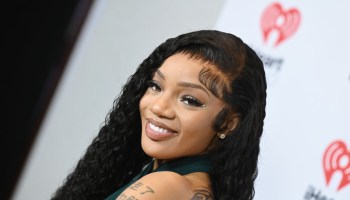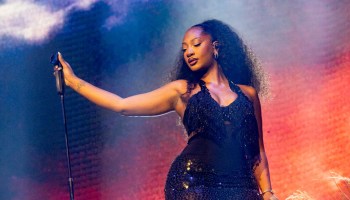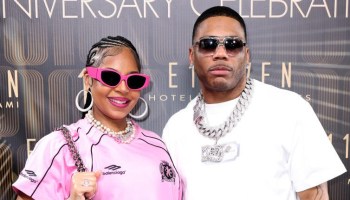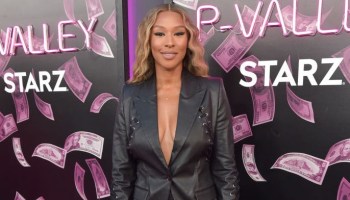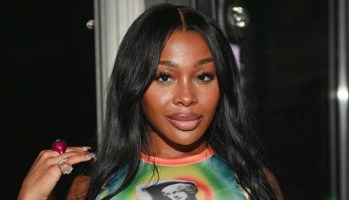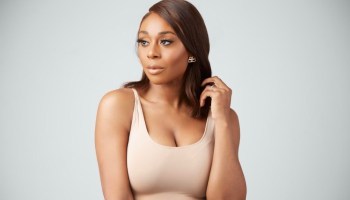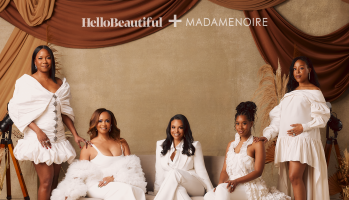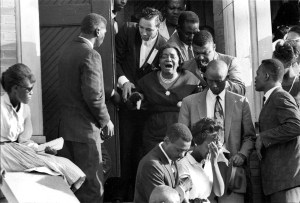
Source: Chicago History Museum / Getty
When I was a child, I remember my sister reading Dudley Randall’s poem “The Ballad Of Birmingham” to me. There we were, two little girls huddled together over a book, not much older than the four victims killed on that dark day in 1963, reading about the tragedy and shaking with fear and despair.
“She clawed through bits of glass and brick/ then lifted out a shoe./ ‘O, here’s the shoe my baby wore/ But baby, where are you?”
Those words jumped off the page at me then and have stuck with me for my lifetime. Now as an adult, I am still haunted by a tragedy more than fifty-years-old.
Last night, those wounds, which the recent influx of crimes against Black people in America won’t allow to fully heal, were re-opened.
Late Wednesday night, an unassuming young White man, quiet and slight-of-build, walked into the Emanuel AME Church in Charleston and sat down. For nearly an hour, he prayed with and listened to a group of congregation members and the pastor who had welcomed him openly. Then, in a devastating turn of events from the night’s planned bible study, he murdered nine of them, boldly declaring that he was there “to shoot Black people.”
MUST READ: Nine Dead In Shooting At Historic Black South Carolina Church
In 1963, when the 16th Street Baptist Church in Birmingham was bombed, Dr. Martin Luther King said of the four victims, “They died between the sacred walls of the church of God, and they were discussing the eternal meaning of love.”
In 2015, the discussion of eternal love, the presence of those sacred walls and the welcome ears of peaceful fellowship were not enough to stop Dylann Roof from murdering nine people.
And I fear they aren’t enough to save us.
America has a long and sordid history of attacks on Black people in our sacred spaces. So many of us are aware of the attacks in our homes and neighborhoods: in our driveways like Medgar Evers, our cars like Timothy Russell and Malissa Williams, on street corners like Eric Garner, in front of motels like King, on playgrounds like Tamir Rice, in our beds clutching teddy bears like Aiyana Jones, on walks back from a candy store like Trayvon Martin, among our friends after a night out like Sean Bell. The list goes on; the depths of these tragedies beyond the scope of mere words.
Yet, there’s something uniquely sinister about an attack on a Black church. When our destiny seemed to fail us repeatedly, when slave masters beat and violated us, when our women were raped, our men stripped of their dignity and our babies torn from their mothers’ arms, we as Black people turned to our faith to heal us. To attack us in the space that celebrates God—when we’re at our most vulnerable and open moments—is a particularly damaging brand of terrorism, and one that America knows well.
MUST READ: Beyond Charleston-Other Black Churches That Have Been Victimized By White Terror
Beyond the bombings and attacks of the Civil Rights era, the 1990s saw a rise of arson against Black churches. In South Carolina alone, nine churches reported bombings in what one Congress-member declared “the return of a biblical plague.”
2008 bore witness to a disturbing resurgence of such violence, yet again, with the election of Barack Obama as president. Almost immediately, years of racism hidden in the folds of colorblind language and systemic attacks on Black people, rose to the surface.
On the day Obama was inaugurated, Michael Jacques set the Macedonia Church of God in Christ in Massachusetts ablaze. Once again, we described this domestic terrorism as “a hate crime,” that phrase that falls all too short of sufficient.
Hate crimes are terrorism. And America must take responsibility for centuries of terror attacks on Black people.
200 years ago, Denmark Vesey, a former slave, abolitionist and founding member of the Emanuel AME church in Charleston, attempted to organize what would have been the largest slave revolt in American history. Martyred in his struggle, he was executed and his church was burned to the ground following a shooting of members at the hands of White men.
Today, the assault on Black people continues and the irony of this frightening repetition of history isn’t lost on us.
Black people are the victims of more than half of “hate crimes” in America. Black people are incarcerated at nearly six times the rate of Whites. Cops kill Black people multiple times a week. Black Americans have had to declare the simplest and most painful of statements, that #BlackLivesMatter, because our country reminds us every day that, when it comes to our justice system, they don’t.
Last night when the news broke, my husband and I sat together in our living room and prayed. Today, I continue to pray for the victims.
But what do you do when even your prayers are no longer safe?
*Editor’s Note: This piece originally ran on June 18, 2015 in the wake of the Charleston shootings. It’s tragic observations ring frighteningly true in the wake of a devastating attack on the LGBTQ+ in a safe haven of their own.*
RELATED STORIES:
President Obama Speaks On Charleston; Makes It All About Gun Control
AME Shooter Left One Woman Alive To Report Tragedy, Family Of Victims Speak Out
3 Things To Know About AME Church
Charleston Church Killer: Everything You Should Know About Dylann Roof










